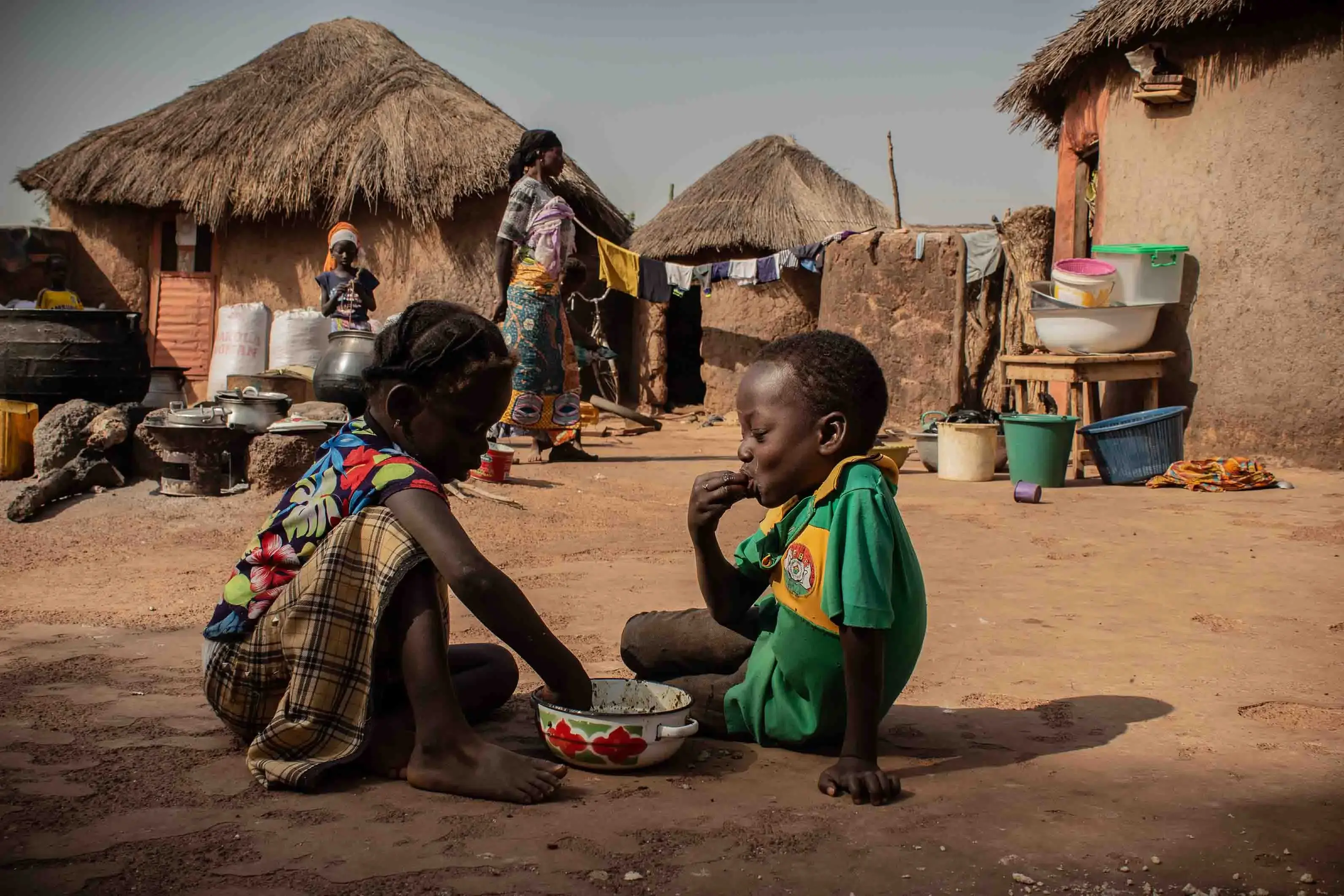Lesson Plan August 19, 2019
Food Security and Hunger in the Age of Genetically Modified Crops
Country:
Grades:
Warm-up: Creating "Know, Want to Know, Learned" charts to assess initial understanding of the topic.
Introducing the Reporting: Reading “In Ghana, a Bumper Crop of Opinions on Genetically Modified Cowpea”, followed by discussion prompts.
Extension Activity: Reflecting on The First 1000 Days, followed by associated activities and discussion questions.

Objectives:
Students will be able to...
- Articulate a basic understanding of genetically modified crops.
- Define orphan crop.
- Assess food security in Ghana.
- Explain the connection between stunting and food insecurity.
- Evaluate the primary arguments for and against the development and consumption of genetically modified foods.
- Identify and explain the various stakeholders (non-profits, farmers, consumers, etc.) perspectives on genetically modified crops in Ghana.
- Develop their own point of view with regard to genetically modified foods.
- Assess the role photography plays in a piece of journalism that is primarily text-based.
Warm-up:
- Create a KWL (Know, Want to Know, Learned) chart in your notebook and silently record what you currently know and want to know (first two columns) on the topic of genetically modified crops (GM foods).
- Create a KWL (Know, Want to Know, Learned) chart in their notebook and silently record what they currently know and want to know (first two columns) on the topic of hunger in Ghana.
- Share aloud what you know and want to know about GM foods and Ghanaian hunger.
Introducing the Lesson:
Genetically modified foods are increasingly consumed. In Ghana, the introduction of the genetically modified cowpea crop is a contentious topic. This lesson explores the arguments for and against the development and consumption of GM cowpea beans in Ghana.
Introducing the Reporting:
Use the following prompts to guide discussion and activity after reading "In Ghana, a Bumper Crop of Opinions on Genetically Modified Cowpea".
- Readers' eyes are often drawn to the photos that accompany a news article. Why do you think editors chose these specific photos for this piece of journalism? If you were the editor, what other type of images would you consider? Why? Explain. Which photo did you find most powerful? Why?
- What is cowpea? Why are cowpea beans considered "poor people's meat" in Ghana? Explain.
- What is an orphan crop?
- Research online. What is food security? What is hunger? Why is food security key to decreasing poverty?
- Assess food security and insecurity in Ghana. Research, assess and share.
- What is stunting? What is the prevalence of stunting in Ghana? How does stunting reflect food insecurity? Research and share your findings.
- Why do you think learning about American consumption of GM food affected former anti-GM activist Mohammed Adams Nashiru so much?
- According to Paliwal, scientists sometimes "ask their pastors to let them speak about GM food after Sunday prayers." Why? In your community do you see religious figures influencing non-religious issues? Explain.
- To what extent did sexism affect the reactions scientist Vivian Oduru received after her public comments on GM foods? Explain.
- Investigate the American Medical Association, the World Health Organization and the National Academies of Sciences perspective on GMOs (genetically modified organisms). Share.
- Why did scientists decide to develop GM cowpea plants lines?
- What are the primary arguments for and against growing and eating GM foods? Which argument do you agree with most? Why?
- Evaluate the extent to which the American public agrees with scientific community in regard to GMOs?
- Evaluate the extent to which the Ghanaian public agrees with scientific community in regard to GMOs?
- Explain the role Food Sovereignty Ghana has played in the GM landscape.
- Explain the role Open Forum on Agricultural Biotechnology has played in the GM landscape.
- Explain the role the Rockefeller Foundation has played in the GM landscape.
- Explain the role USAID has played in the GM landscape.
- After reading, researching and discussing, finish your K/W/L charts. Reflect on what you have learned from this article and lesson as you fill in the learn columns on the charts that were part of the warm-up.
Extension Activity:
Learn more about the long-term effects of regular access and consumption of nutritious foods by reading Roger Thurow's, The First 1000 Days, where activities, discussion questions and more can be found.
REPORTING FEATURED IN THIS LESSON PLAN
-
×
 English
English -
 English
EnglishThe story of 1,000 days–the vital period from the beginning of a woman's pregnancy to her child's...






